The Art of Japanese Shibari

Shibari (Japanese for “bondage”) or Kinbaku (the name of the activity itself) is originally the Japanese art of bondage. These fascinating bondage techniques combine both sex and art. Consensual bondage is very visually stimulating and can be breathtaking, not only for the viewer. It is based on a close relationship between the binder and the bound—A relationship built on intimacy and complete trust. With such an intimate shoot, what role does the photographer play?
Kinbaku is not just a BDSM technique. It is primarily an art form that requires years of training, perfecting, and learning the rules.
What you should know about Shibari and Kinbaku
The term Shibari is used in Europe to refer to any type of eastern bondage. Kinbaku refers to more a specific form of bondage that is primarily based on emotions. Some believe Kinbaku is sexual and Shibari is not. This perception is very individual. Shibari is a general term that we’ll be using in this article.
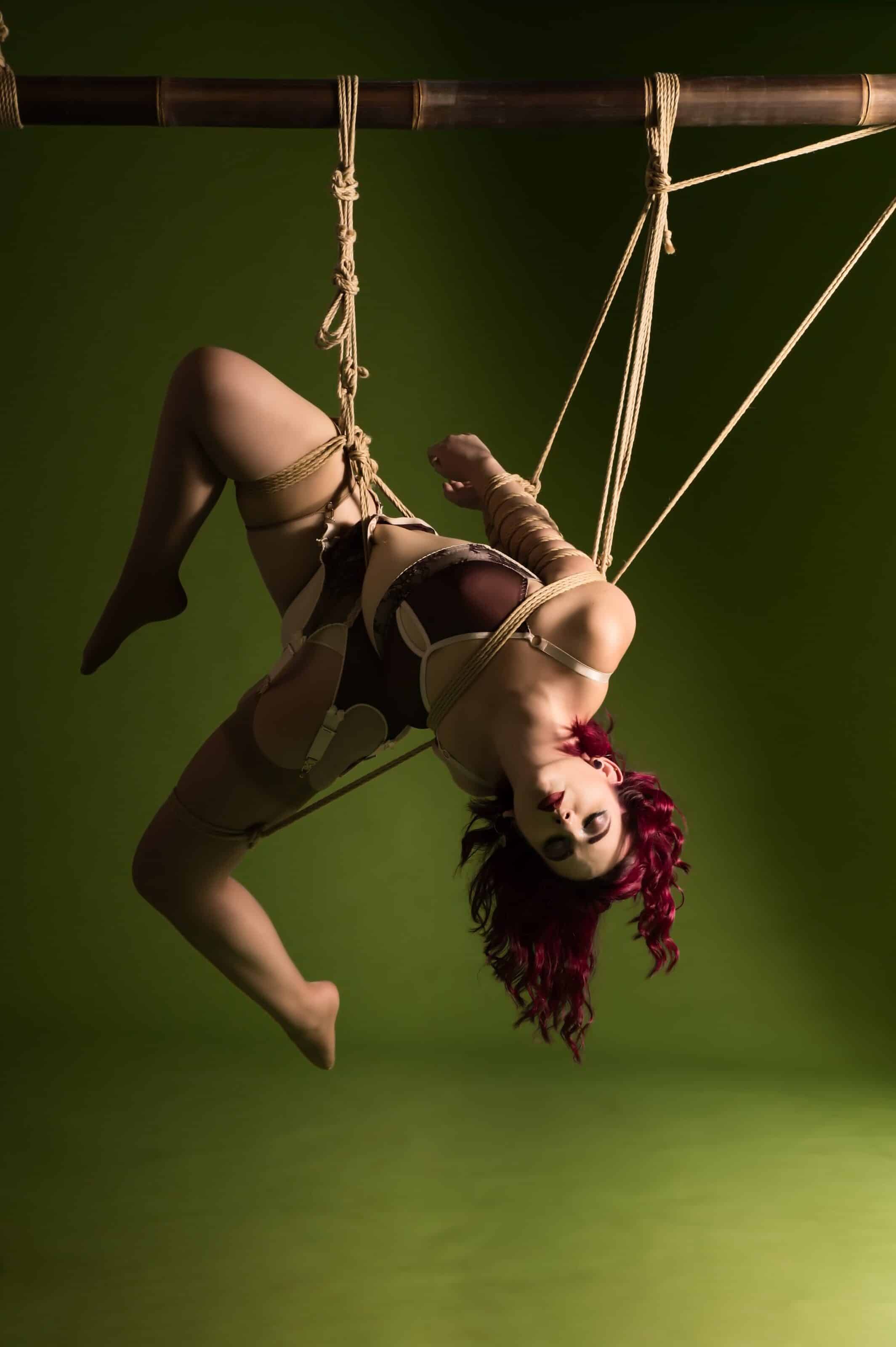
Nikon Z6ii, Tamron 24-70mm 2.8, 1/250s, f/6.3, ISO 160, 52mm
The fundamental building block of any type of bondage is trust. The binder, also known as the Rigger, and the model must trust one another. The bound trust the riggers not to harm them in any way during the process. This allows them to completely relax during the process and give up control of their bodies.
The binders go through the process with the model with mutual trust. They know nothing unexpected could happen that would harm anyone or result in unwanted panic. At this moment, this relationship is delicate and sacred. This is precisely where the beauty of the shoot is that you want to capture.
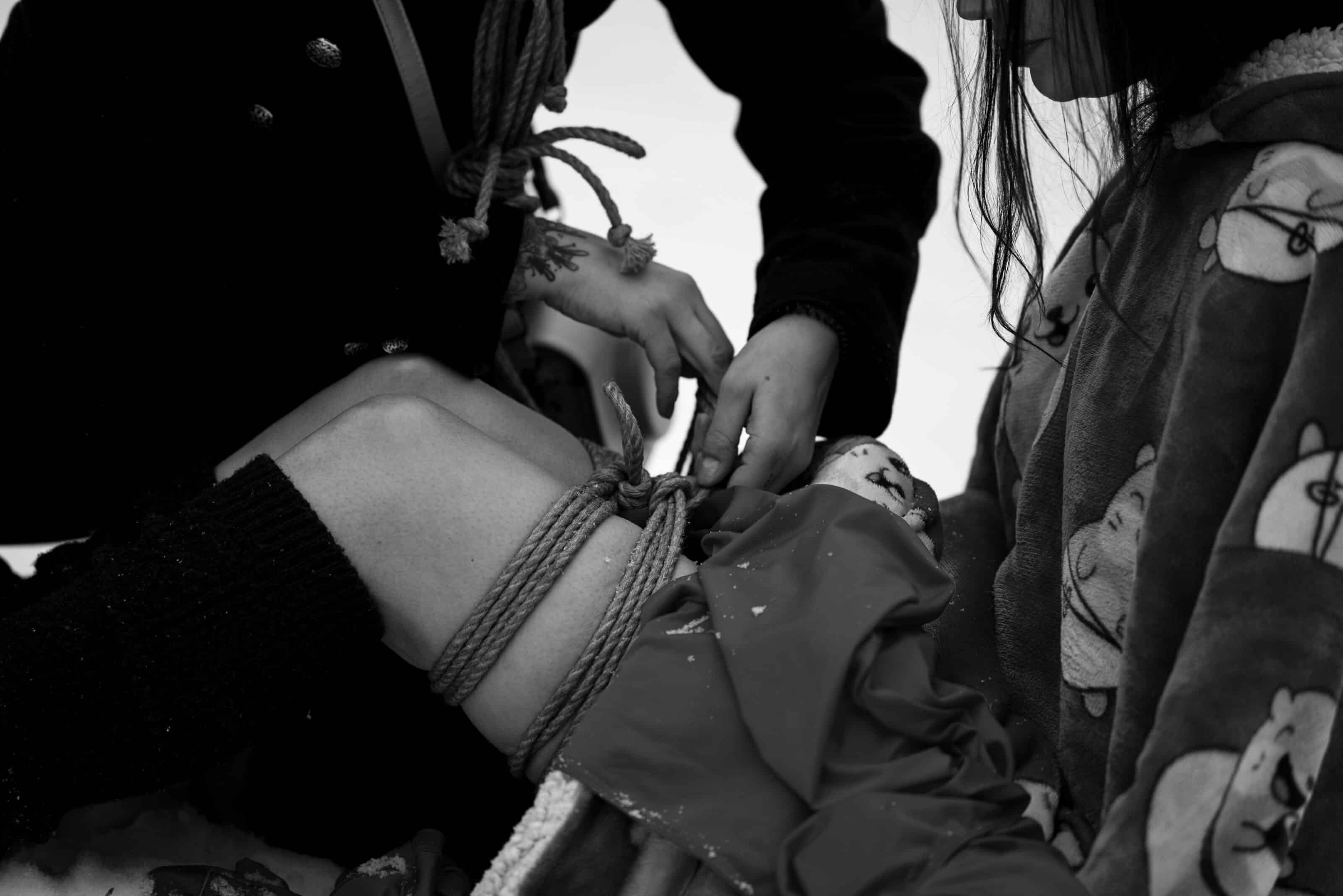
Nikon D750, Nikkor 105mm Ai-S f/2.5, 1/800s, f/2.8 (approx.), ISO 200, focal length 105mm
Bondage as we know it is a complete denial of freedom. It is commonly seen as a criminal act. We often see victims of crime tied up in movies. We see binding or shackling as an involuntary act of desperation. However, Shibari is an act of voluntary loss of mobility and surrender.
It is critical that the Rigger knows what they’re doing. They must have training, experience, and the necessary knowledge of what to do. Not anyone can bind, so only choose true professionals for your projects. Communication and preparation is an absolute must. Don’t underestimate it or something can go wrong in the shoot.
Shibari photography
Basically any lens can be used for Shibari photography. Wide-angle lenses can make for interesting artistic shots, although they slightly distort the human body. Longer portrait lenses, on the other hand, give you beautiful bokeh and let the bound subject stand out from the background. Of course, if you’re binding indoors, remember you may not be able to fit the entire shot with a longer lens.
- Focus on the whole as well as details. Observe the binding process and capture details of the ropes and knots. The way the ropes are indented into the skin can be interesting and even beautiful.

Then there’s the whole view of the bound that is like out of a painting. It doesn’t last long so be ready and shoot quickly.
Especially in complicated bindings, the model can’t last more than a few minutes. As soon as they start to get uncomfortable, everything must be removed regardless of whether you’re finished or not. The model’s comfort is the priority.

Nikon Z6ii, Nikon 50mm 1.4, 1/250s, f/9, ISO 160, 50mm
- You can document the binding process and result. Observe how the binding is done and try to capture the relationship between the Rigger and the bound. Various knots and the ropes themselves are also of interest. The entire process has its rhythm and pace. It’s all photo-worthy, but be sure not to interfere too much in the process. Be a quiet observer.
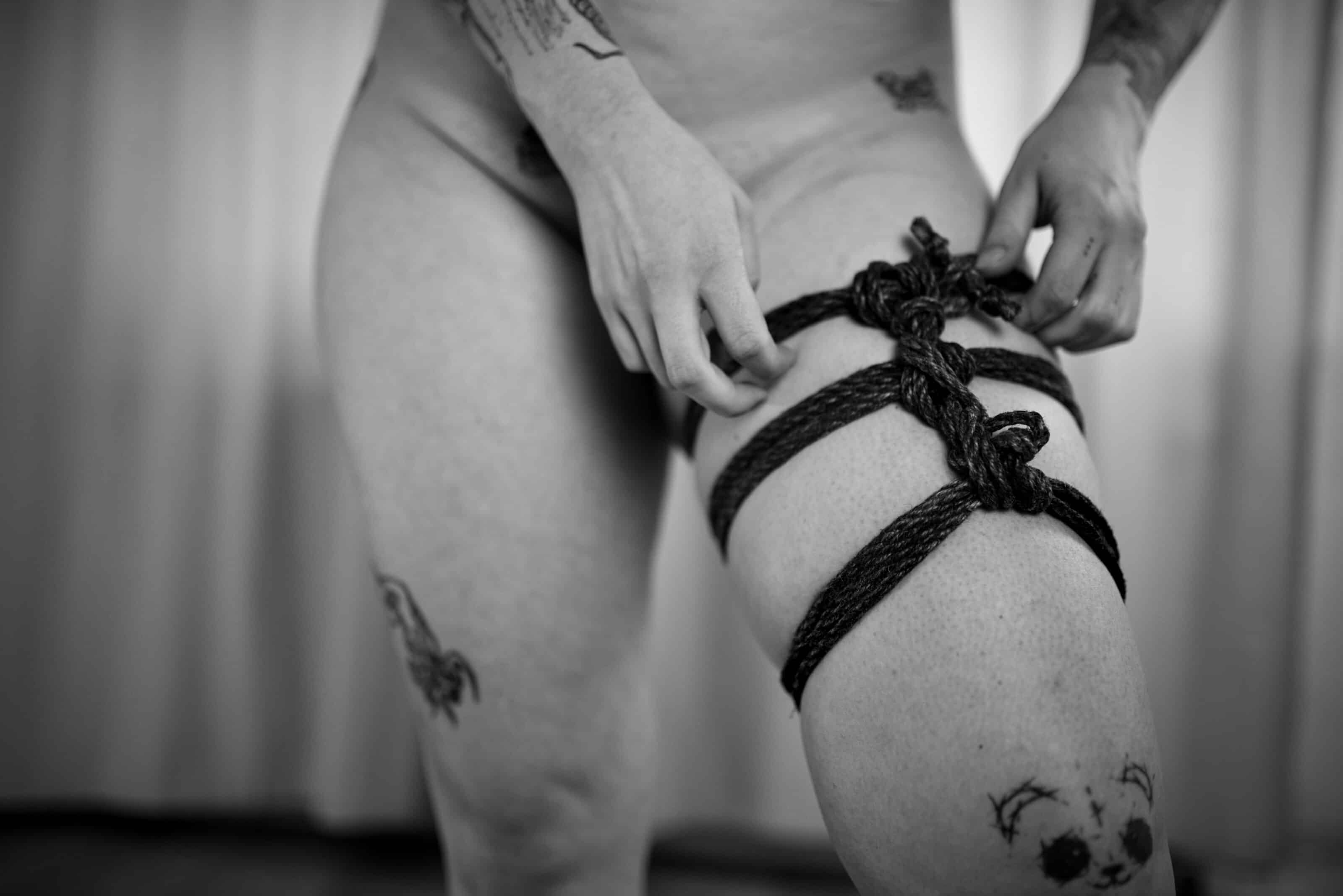
Nikon D750, Sigma ART 35mm 1.4, 1/320s, f/1.6, ISO 200, focal length 35mm
- You can capture the relationship between the Rigger and the bound. Observe how the two communicate, you may see a hint of nervousness between the two, or, on the contrary, complete surrender. The relationship may or may not be intimate or sexual. Notice this and capture it. You are capturing art as it is made. It’s a different form of art than you create as a photographer, but that makes it all the more fascinating.
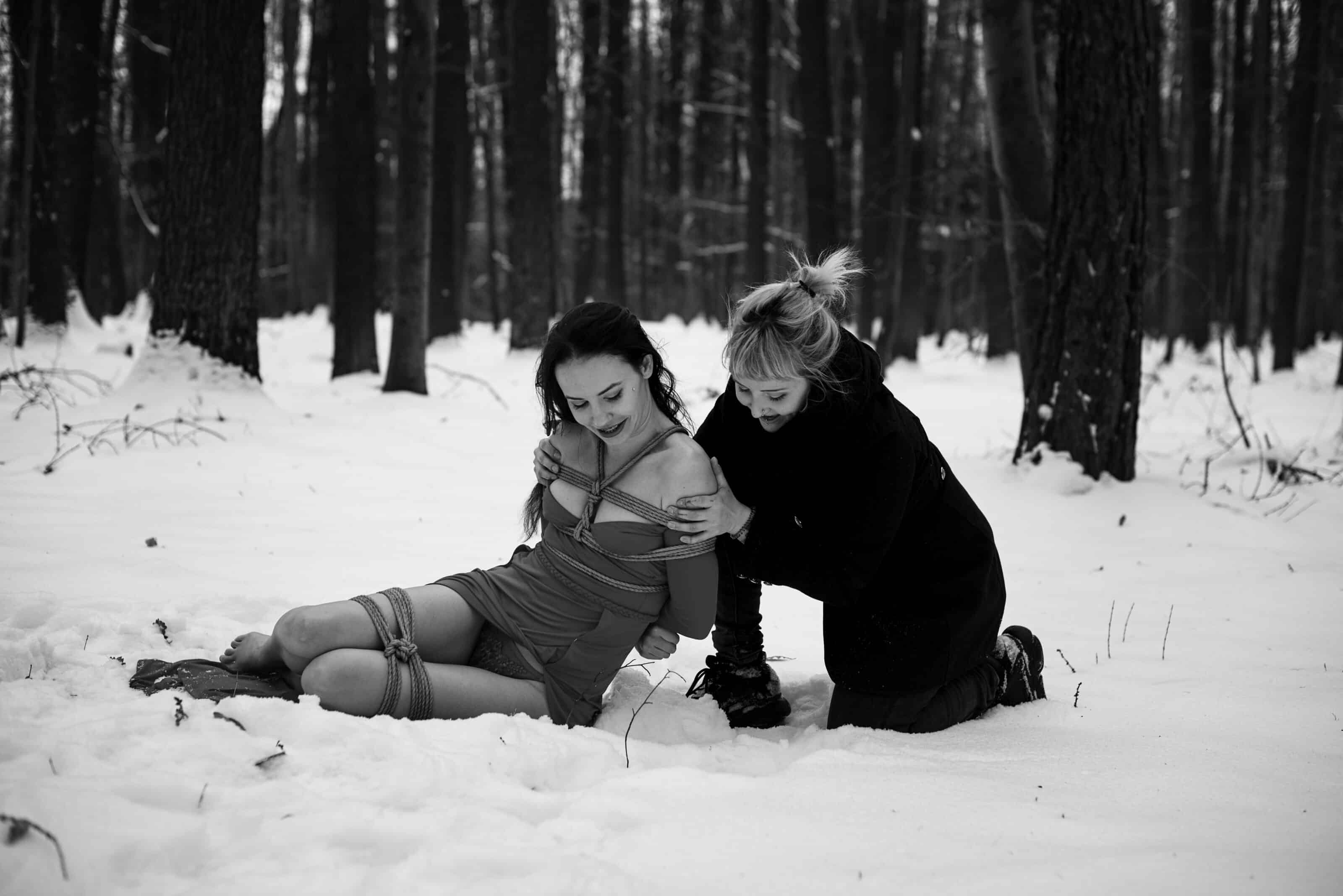
Nikon D750, Nikkor 50mm 1.4, 1/800s, f/2.8, ISO 200, focal length 50mm
What a professional Rigger says about Shibari
“Shibari is the Japanese art of rope bondage. Jute ropes are most commonly used, but you can also find hemp, cotton, or coconut ropes. Shibari is rooted in the Japanese martial art of Hojojutsu, from which some techniques have been adopted.
Shibari’s transformation into a BDSM technique happened in the early 20th century, when Ito Seiu used ropes to restrain models in his drawings and later photography. The themes of his work were often mythological, portraying the restraint of prisoners or punishment of the bound. After World War II, Shibari became popular with the publication of magazines that contained photographs, drawings, erotic stories, and instructions for bondage.

It’s important to notice the rope marks that remain on the model’s skin for several minutes and up to several hours.
If you want to shoot multiple poses, it’s a good idea for the Rigger to progress from the simplest to the most complex in terms of the amount of rope used. From poses on the ground, where the tension in the ropes and pressure on the skin is not so great, to partial and full suspensions. It’s not wrong to let rope marks show in the photos. It’s just something you need to be aware of and plan for.
It’s also important to communicate with the Rigger and the model and know what positions will be used, what angles are most aesthetically pleasing, where the unsightly knots or parts of the harness that we don’t want to show are, and how long the model will last in each position. Some positions are comfortable and the model can stay there for several minutes, others are only good for a few seconds. It’s good to have everything ready before the model gets into the desired position.”
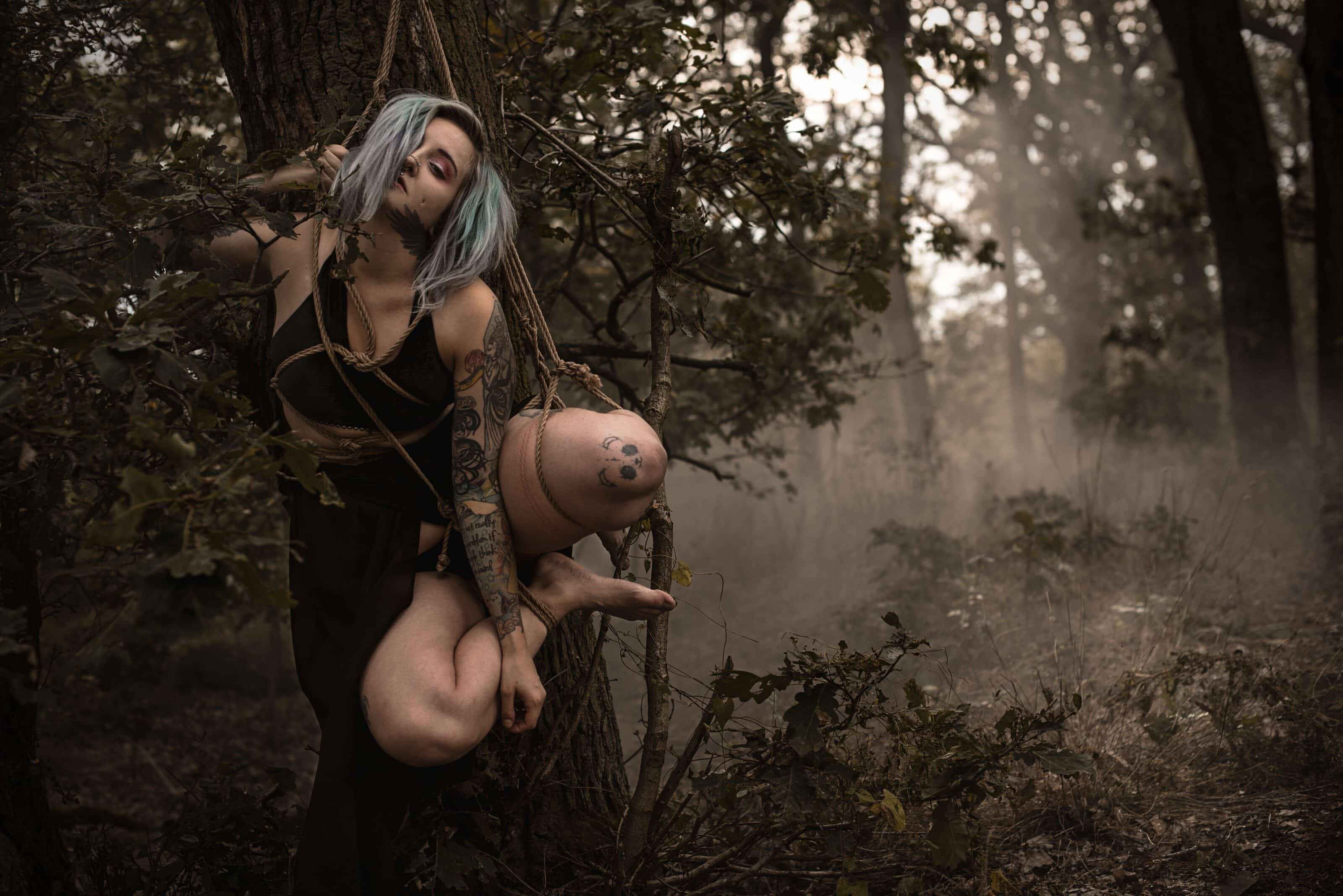
Nikon D750, Nikkor 50mm 1.4, 1/500s, f/3.2, ISO 200, focal length 50mm
Shibari is much more than just a practice
If you happen to encounter Shibari, don’t judge it as a weird BDSM technique. Notice the trust it requires. The sensitivity the Riggers have. The sense of surrender the models can achieve. And most importantly, the result—interesting, fascinating, artistic images. Shoot quickly and quietly, honoring the entire process.
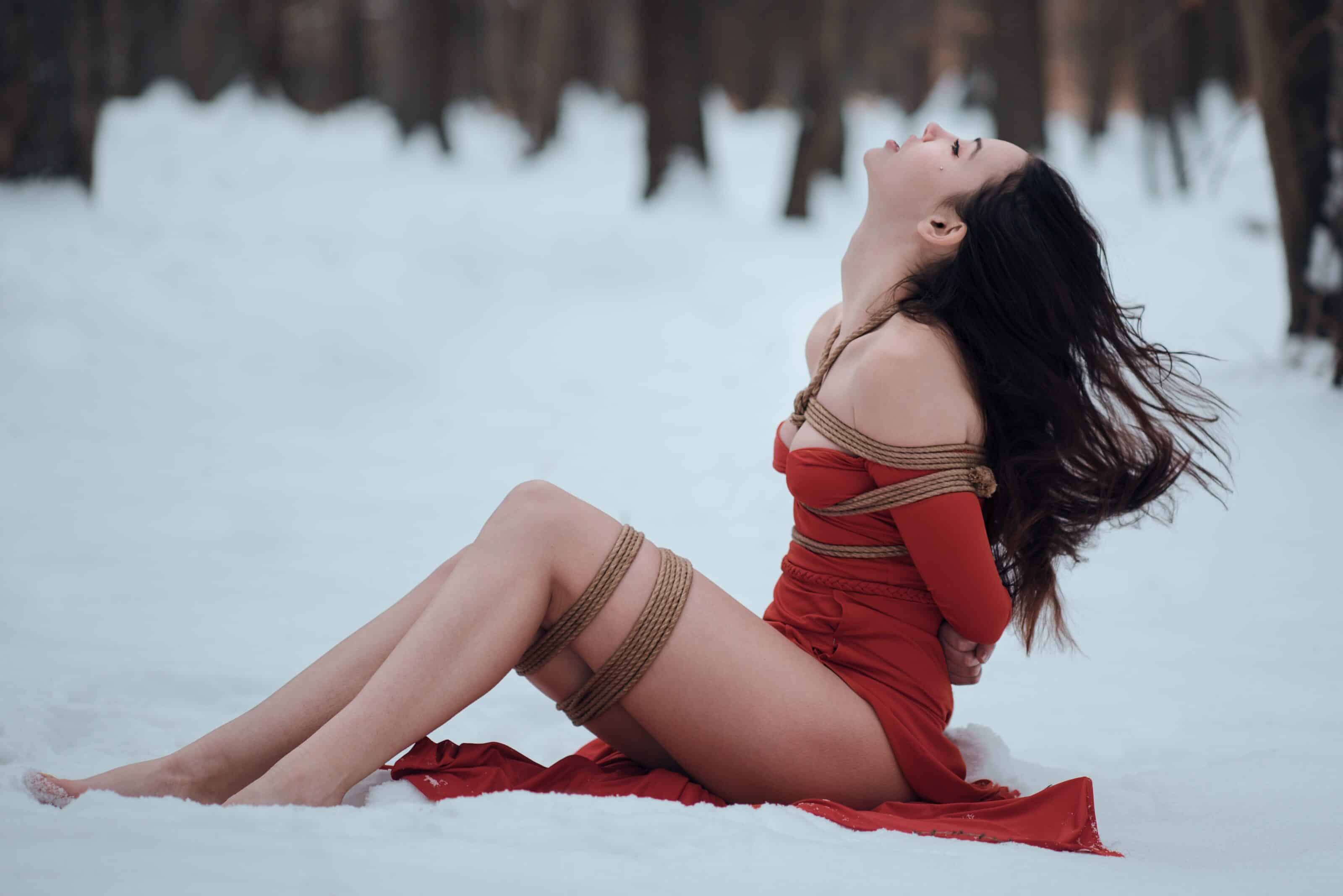
Nikon D750, Nikkor 105mm Ai-S f/2.5, 1/800s, f/2.8 (approx.), ISO 200, focal length 105mm